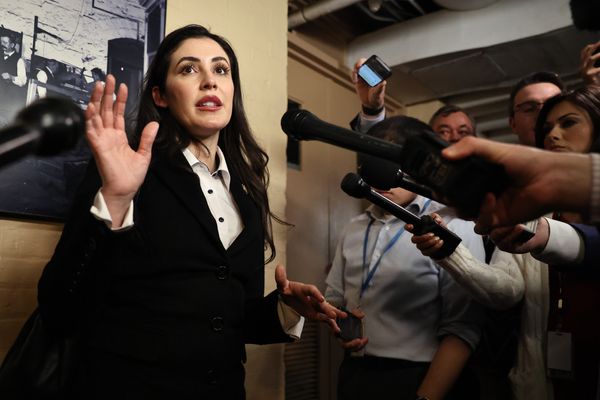
A brief history of family philanthropy: India has had a rich culture of giving, primarily through social networks and religious institutions. The process of industrialization that began in the 19th century created significant amounts of wealth that business families could devote to philanthropic projects. Early charitable efforts led to a period of more institutionalized giving for vital causes like education and health.
The most influential philanthropist during that time was Sir Jamsetji Tata. Believing in the critical need to nurture brilliant minds, he established the J.N. Tata Endowment Scheme in 1892, much before similar foundations were founded in the West. Inspired by his conversation with Swami Vivekananda on a voyage, Tata persevered for over a decade and pledged half his wealth to establish the Indian Institute of Science (IISC). Founded five years after his passing, IISC remains one of his most remarkable contributions to nation-building, one that his estate continues to fund.
You might also like
Shiprocket raises funds, joins unicorn club
What to do when magical 60:40 formula doesn't work
Most are happy with digital world, except these Indians
What all will sustain upside in Apollo Tyres stock?
The next major shift was the consolidation of our freedom movement under Mahatma Gandhi’s leadership. He believed that ownership of wealth must be held primarily in trusteeship for the benefit of the poor, a view shared by prominent industrialists like Jamnalal Bajaj, G.D. Birla, Ardeshir Godrej and Dr. K.A. Hamied. Ardeshir Godrej contributed a sum of ₹3 lakh to the Tilak Swaraj Fund established by Mahatma Gandhi in 1920. In 1935, Mahatma Gandhi inspired Dr. K.A. Hamied to establish Cipla with a vision to make India self-reliant and create wide access to quality healthcare. A compassionate approach to medicine and healthcare that goes beyond the pursuit of profit has been Cipla’s legacy. Family philanthropists also supported Mahatma Gandhi’s other objectives like non-violence and the promotion of khadi.
Philanthropic families played a pivotal role in endowing institutions and changing mindsets, thus contributing to modern India. They have helped found educational institutes that remain prominent even today, such as the Birla Institute of Technology in Pilani (G.D. Birla), the Indian Institute of Management (Kasturbhai Lalbhai) and the Tata Institute of Social Sciences (Sir Dorabji Tata). Many families have established foundations and trusts that work directly with non-profit organizations and local communities to address critical issues like healthcare, quality education, skill building and livelihood generation, thereby helping the country foster a better society.
Beyond philanthropy, Indian family businesses upheld social responsibility as a core value. They considered business a force for good long before corporate social responsibility (CSR) was a legal mandate. In 2001, Cipla’s 3-in-1 fixed dose combination was the first anti-AIDS cocktail that brought the cost of treatment down from $12,000 per patient per year to less than $1 a day, enabling millions across the developing world to access life-saving therapy. Godrej’s ‘good and green’ approach to building a more inclusive and greener India is an example of keeping sustainability at the heart of business.
The role of family philanthropy today: According to the India Philanthropy Report 2022 published by Bain and Company and Dasra, Indian family philanthropy is expected to grow at a robust 26% compound annual growth rate from 2021-22 to 2025-26. There is still substantial scope to unlock an additional corpus of ₹60,000 crore to ₹1 trillion. Family philanthropists are willing to contribute and increase their giving over time to social causes.
The covid pandemic has shown us how many unmet needs there are and how much work is left to do. Covid revealed systemic inequalities in our society, as the most disadvantaged sections were disproportionately impacted. Nowhere was this more evident than the migrant crisis; millions of daily-wage workers were forced to travel long distances with little to no sustenance and support.
Family philanthropy has enormous potential to catalyse how society helps address these issues. Wealthy families can bet large sums on solving problems that remain underfunded. They also have the wherewithal to take a systems design approach to maximize the impact of their giving. New age role models such as Azim Premji, Shiv Nadar and Rohini Nilekani are setting an example for strategic family giving and inspiring others to follow suit.
Perhaps the most significant trend is an increasing inclination among family philanthropists to pool resources for collaborative efforts. For example, Social Compact, a multi-stakeholder platform founded with the support of philanthropists such as Rati and Farhad Forbes, Anu Aga and Meher Pudumjee, seeks to ensure greater dignity and equity for 1 million informal workers and their families. Such collaboration is an indicator of Indian philanthropy transitioning to a new era.
The future of giving: As philanthropists come to see the benefits of collaboration, they realize that this should be done more systematically. Family philanthropists can join hands to help scale up efforts in areas of critical need and provide support to new philanthropists. Towards the next 75 years, business families can draw inspiration from their rich tradition of giving during India’s formative years and help build an inclusive India where a billion thrive with dignity and equity.
Neera Nundy & Rumana Hamied are, respectively, co-founder and partner, Dasra, and managing trustee, Cipla Foundation
Elsewhere in Mint
In Opinion, Harsh V. Pant writes on the future of India's global pursuit of self interest. From faux-convents to Saraswati Shishu Mandirs to Sarva Shiksha Abhiyan, Anurag Behar tells what shaped Indian education. Long Story tells how a company as old as independent India is innovating to fend off many upstarts.







